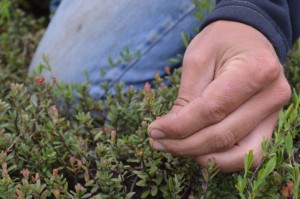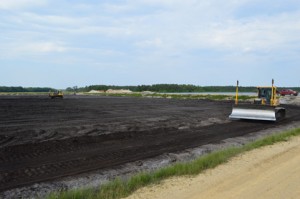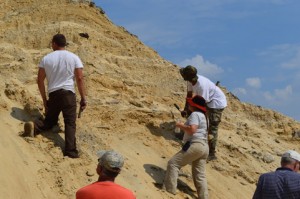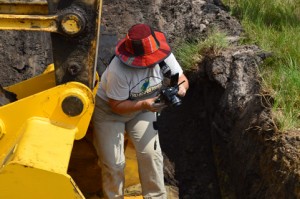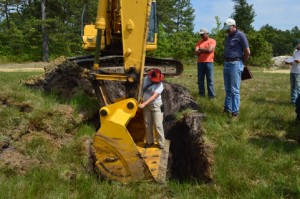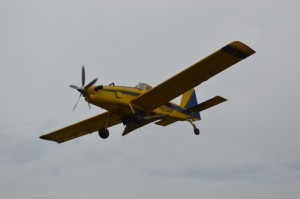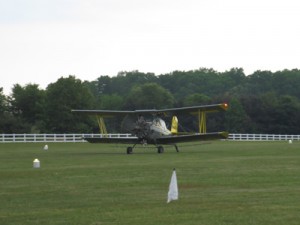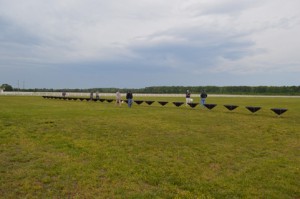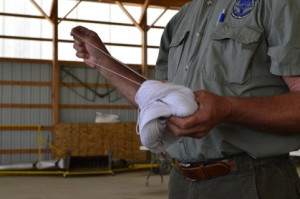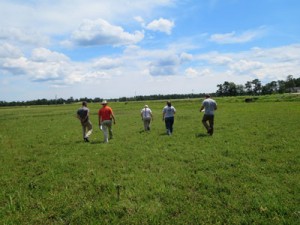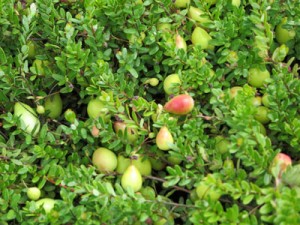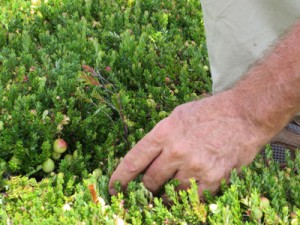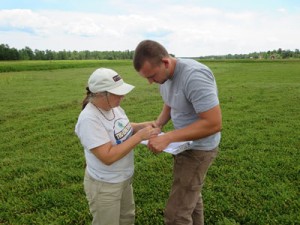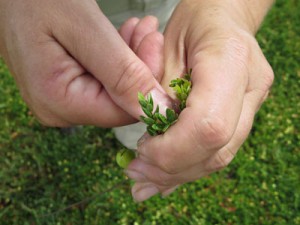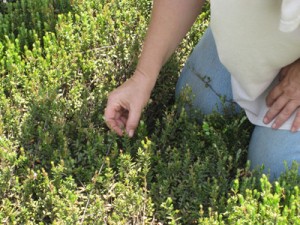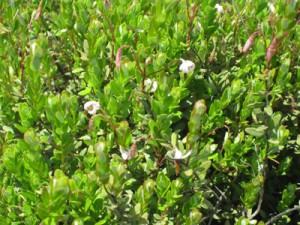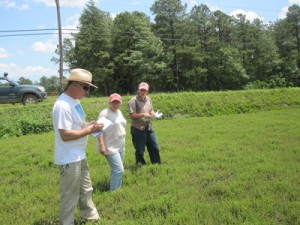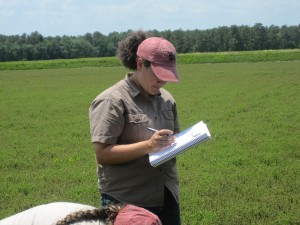It’s once again the time of year Pine Island gets a visit from Dr. Joan Davenport of Washington State University. Joan, a former researcher for Ocean Spray, works with Pine Island Cranberry to provide guidance on fertilizer, water, and nutrients, as well as general PIICM management. Joan comes to see us in the spring during the bloom period and again in the height of summer to discuss fertilizer needs for bud set.
A high priority for her May visit this year was discussion about changing some of our renovation processes in order to increase efficiency and eventually, increase yield. CEO Bill Haines and our PIICM team sat down with Joan to discuss some ideas. Bill’s #1 question: could Pine Island put sand on renovated beds instead of our usual process of stripping topsoil, grading the subsoil, and then re-grading the topsoil? Some of the reasons for considering this include drainage: proper drainage has been our biggest problem in the efficient establishment of renovated/new bogs. In addition, some of the soil (deep muck/peat) at Sim Place makes renovation slow, complicated, and expensive. The goal is to create a homogenous planting medium to simplify management of water and nutrition.
Joan agreed that it could work; growers in Wisconsin have had some success with this method. The idea is to put on 12 inches of sand, which covers half of the rooting depth. Sand is a uniform medium for drainage. The issue is what kind of sand to use, as there can be a problem with using mixed sand: even a small amount of silt or clay can cause a sealed surface layer. The top two inches would need to be clean coarse sand to prevent us from needing to go back and fix the problem. The big advantage here is that we won’t need to worry as much about the quality of the subsoil, as long as the top layer is good quality.
After some discussion, the team went to various locations at both Sim Place and on the home farm to look at various types of soil. This, as Joan says, was “the fun part!” The tour finished at our latest home farm renovation project at 11 Acre/Ben Haines.
Joan finished her visit with us on the following day with a walkthrough to make nutrition decisions for our established beds. As always, the amount of fertilizer to be applied is determined by variety, soil conditions, and past practices, requiring constant evaluation of current conditions, history, and trends. Nutritional needs are different for young vines as opposed to established plantings, as well. We’re glad to have such a fantastic opportunity to help us get better at what we do!

